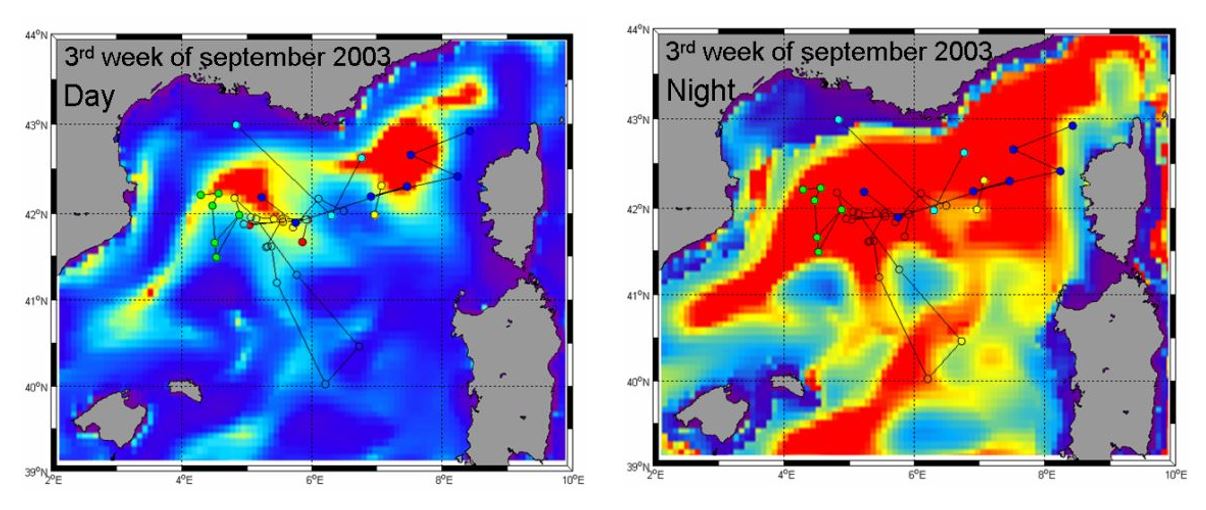OSMOSIS
Developing multi-satellite products for marine resource management
The SEAPODYM micronekton model is forced by three key variables: the temperature and the ocean currents integrated through pelagic layers between 0 and 1000m and the vertically integrated primary production. T
he aim of this project was to test the sensitivity of the model to its forcing, in particular to use a new multi-satellite product with improved ocean currents and primary production developed from past and present ESA and non-ESA Earth Observation missions.

Fin whales movements and micronecton biomass in the Mediterranean Sea. Source http://osmosis.artov.isac.cnr.it/background.html
REFERENCES
Mulet S., Rio M.-H., Mignot A., Guinehut S., Morrow R. (2013). A new estimate of the global 3D geostrophic ocean circulation based on satellite data and in-situ measurements. Volumes 77–80: 70–81.
Lehodey P., Conchon A, Senina I, Domokos R, Calmettes B, Jouanno J, Hernandez O, Kloser R. (2015). Optimization of a micronekton model with acoustic data. ICES Journal of Marine Sciences
